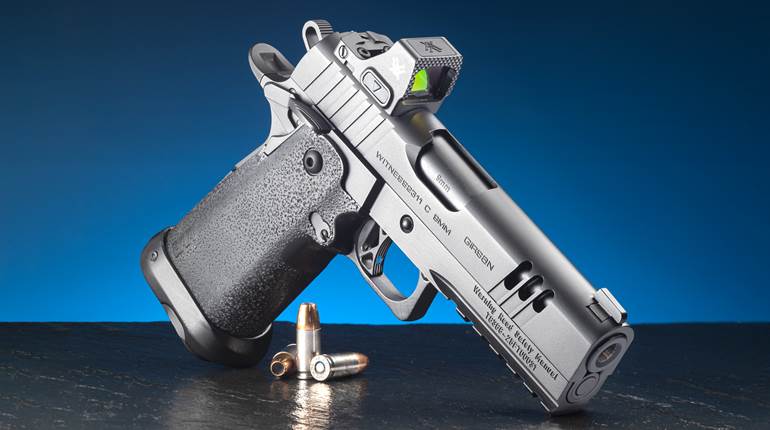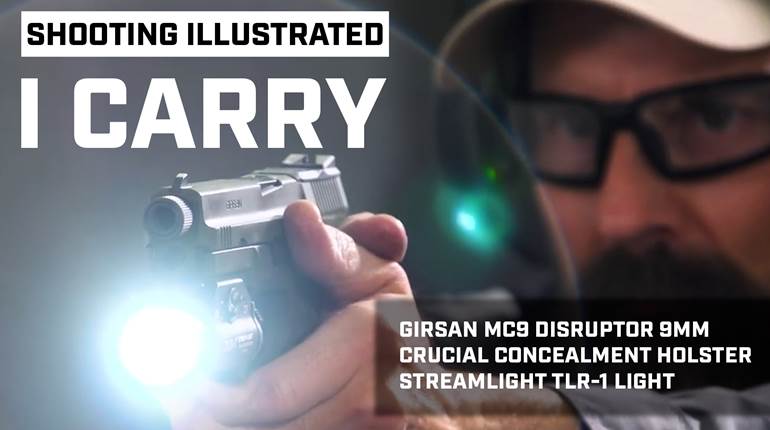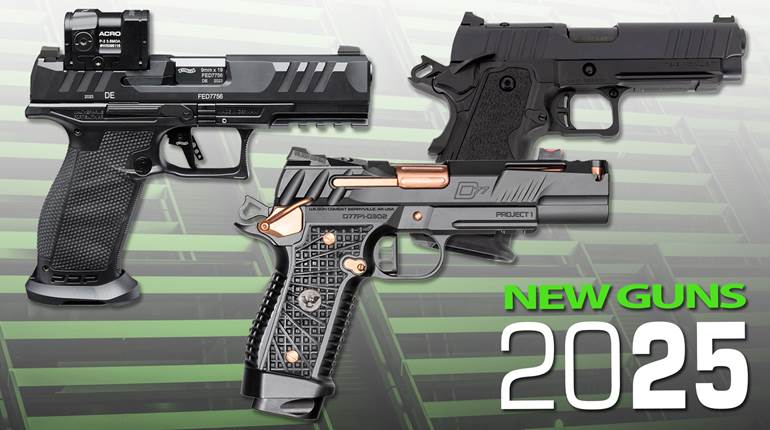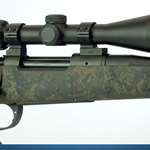
Akkar started making automotive and gun parts in 1985 in Istanbul, Turkey, and it has been one of the leaders in the current rise of Turkish gunmaking. The company started with pump-action and semi-automatic shotguns, then moved into over-unders and side-by-sides. The latest of the latter is a classically styled bird gun, the Model 512, and it is imported by European American Armory under the Churchill name.
A full line of guns from .410 bore through 12 gauge—all with scaled receivers—is offered, but our sample was a 512 chambered for 3", 12-ga. shotshells with 28" barrels. There is a coach gun with extended choke tubes and 18½" barrels offered as well.
Barrel selection is made via a button centrally mounted in the safety on the tang (l.). A brass bead (r., top) is found at the muzzle, and an Anson-style push rod retains the beavertail fore-end (r.).
A boxlock, the Churchill starts off with a nickel-plated steel receiver with graceful lines and a businesslike appearance. The balls that match up to the barrels’ chambers are not rounded at the rear and have been scalloped to save weight and give the gun a more modern look. Adding to that look is a void in the top tang’s lever.
Barrels are cold-blued and sleeved into a monobloc with the joint covered by a thin line of engraving. The design is repeated at the barrels’ rear. Internal diameter was 0.729" for the right barrel and 0.728" for the left. The gun comes with five interchangeable choke tubes: skeet, improved cylinder, modified, improved modified and full. Interestingly, the ungrooved, untapered 0.31"-wide top rib is concave on its upper surface and forms a trough with the brass bead near the muzzle at its terminus.
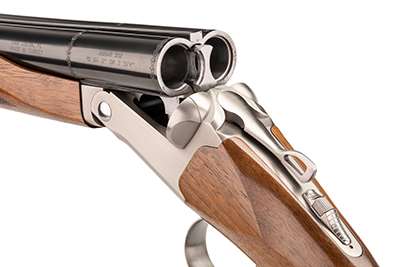
Top locking is by way of a 0.15"-tall, single sliding bolt that retracts when the top lever is pushed to the right. This locks into a 0.702"-long recess in the rear face of the monobloc. Side-to-side locking is provided by the fit of two underlugs into their recesses machined into the receiver, both on the sides and on the top of the receiver’s interior. The front lug’s face rotates on the hinge pin that runs transversely through the receiver’s front.
The trigger is a non-automatic, single-selective mechanical unit, and the blade is gold-plated. Barrel selection is via a button centrally mounted in the safety on the tang, and it could not be simpler, as there is an “L” and an “R” engraved on the tang. The grooved button is proud enough that it is possible to choose the desired barrel—and choke—with minimal fumbling. A red dot on the tang is revealed when the safety is disengaged. The trigger guard is large and round, allowing for gloved fingers.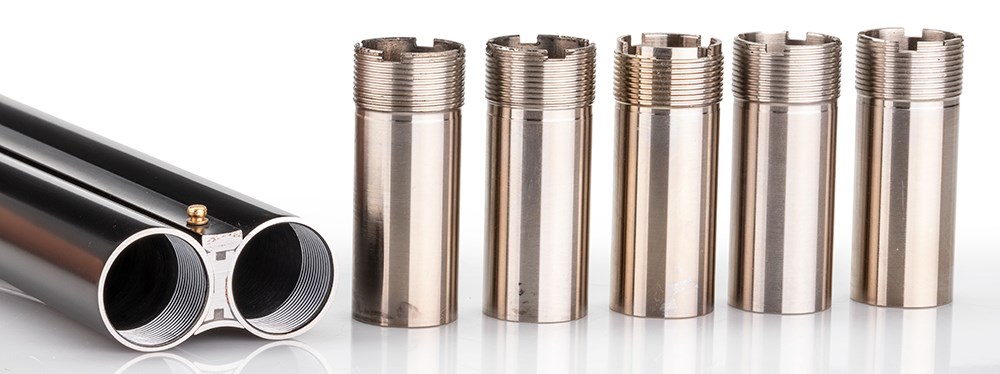
The EAA Churchill 512 comes with a set of five choke tubes (skeet, improved cylinder, modified, improved modified and full) and a wrench for their installation.
The stock is of straight-grained Turkish walnut with a fairly open pistol grip and a slight palm swell that favors right-handed shooters—and it is slightly cast off as well. There are bordered point-checkering panels on both sides of the wrist and the fore-end. Machine cut, it is fairly well-executed although not terribly aggressive. Topping the butt is a black spacer followed by a fairly thin—0.31" to 0.45"—rubber recoil pad. Its texture is such that it did not snag on clothing while mounting the gun. The fore-end is of the beavertail style, wide but not cartoonishly so. It is retained by a plain Anson-style push rod at its front.
With the Churchill, you need to remove the shells yourself as there are no ejectors; this is an extractor-only gun. Opening the action presses the extractor’s front against a lug on the receiver that pushes the single extractor to the rear, allowing the shooter to remove either the hulls or live shells.
The Churchill 512 was patterned at 40 yards with Winchester Xpert steel No. 6s and fired at both skeet and sporting clays for function. Of the 450 rounds fired—a mixed bag of 2¾" target loads from Federal, Fiocchi, Remington and Winchester in shot sizes ranging from Nos. 7½ to 9—there were no malfunctions. The gun pointed well, right where two of our evaluators were looking. It swung well, too, especially on fast crossers—there’s nothing like having two barrels out front to help with follow-through.
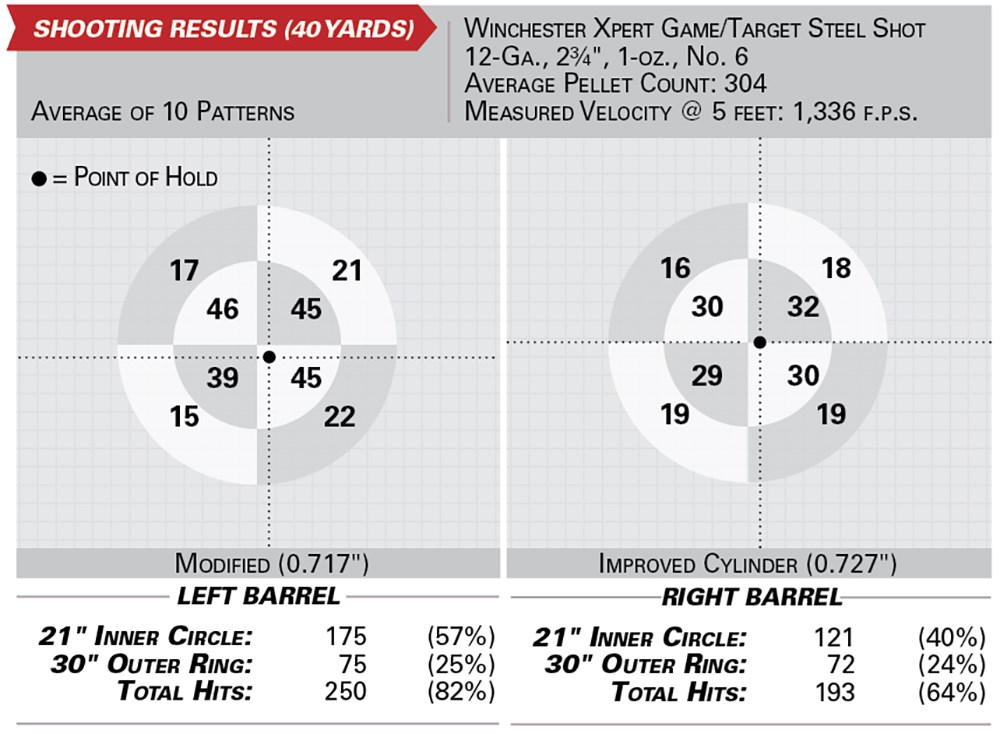
High marks—especially for a gun in this price class—were given to the stock, which, due to its open and thin-wristed grip, made the gun feel lively in the hands. Even though this is a fixed-breech gun weighing only 6 lbs., 4 ozs., recoil, even during 100-round sessions, did not seem to be punishing. Most empties slid out easily, and we were grateful to simply drop them in the vest pocket rather than play hull hunters at each station.
While not as popular on the target circuit as semi-automatics or over-unders, there is still a simple joy in old-school side-by-sides, be it afield or at the range. And the EAA Churchill is a well-executed and affordable rendition for those willing to give it a try.













